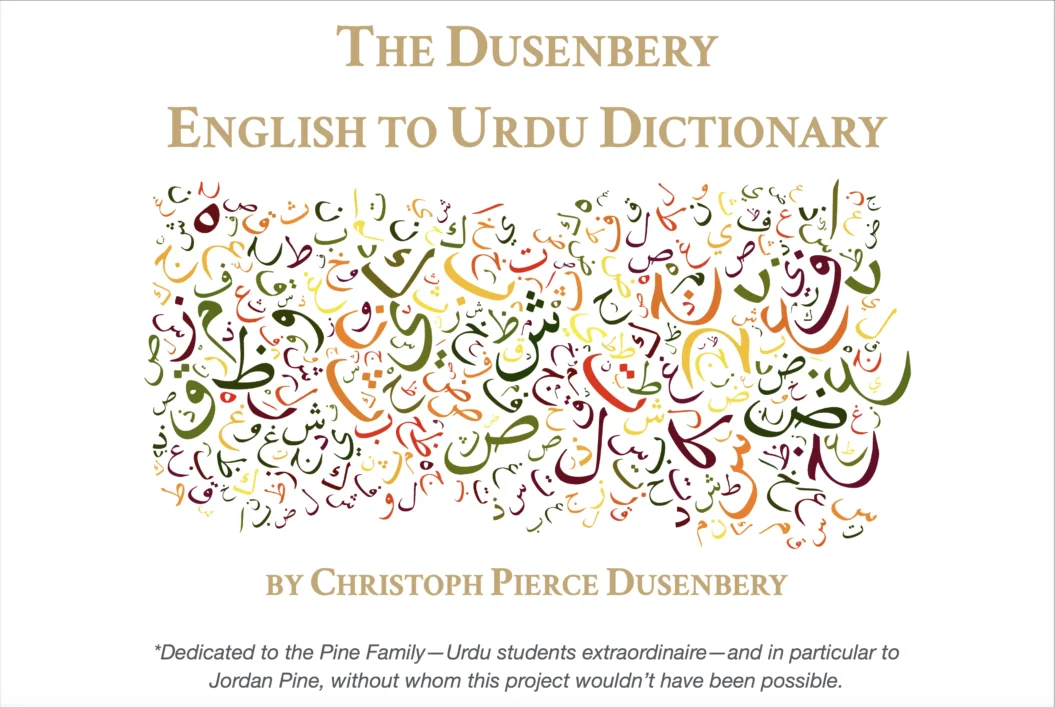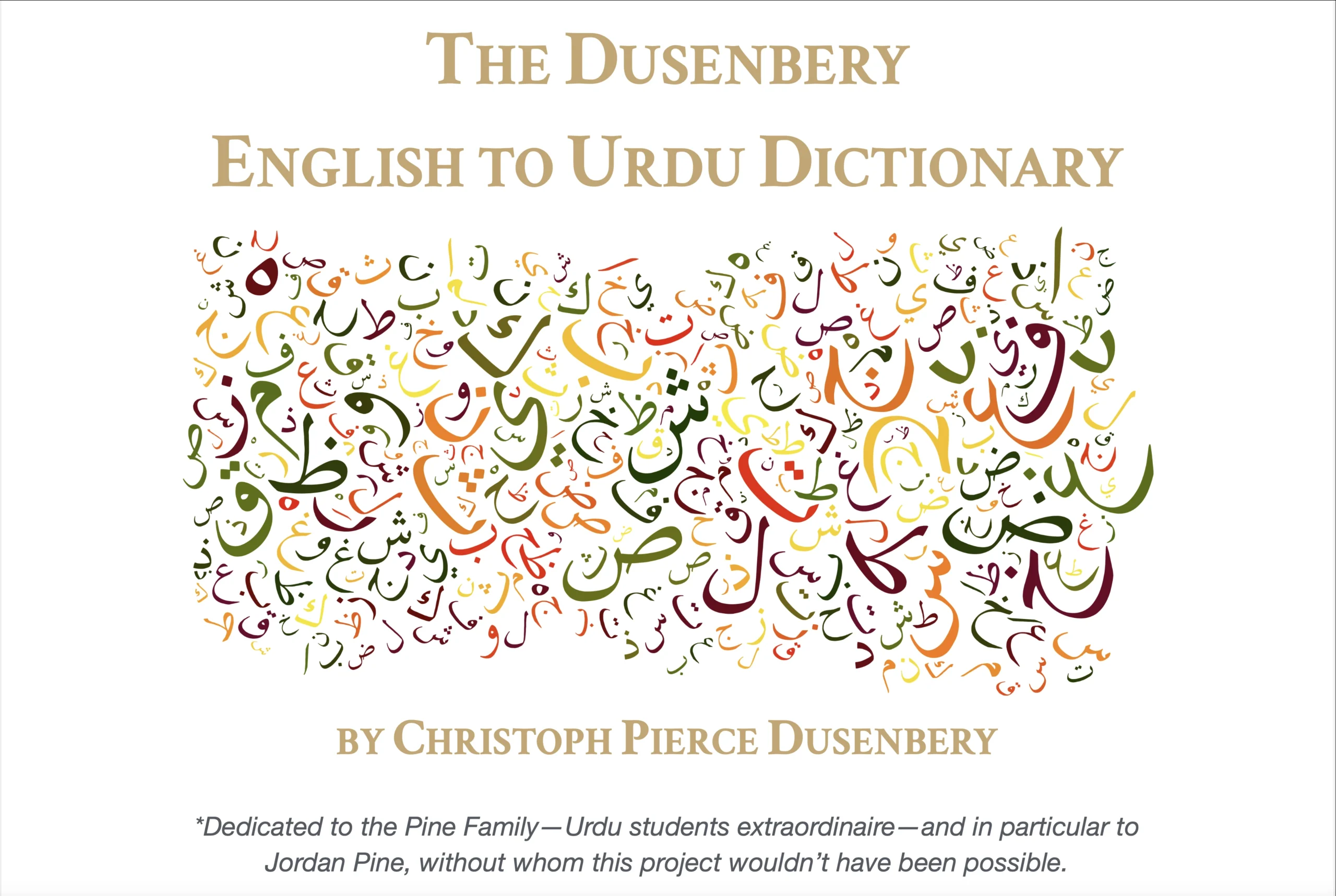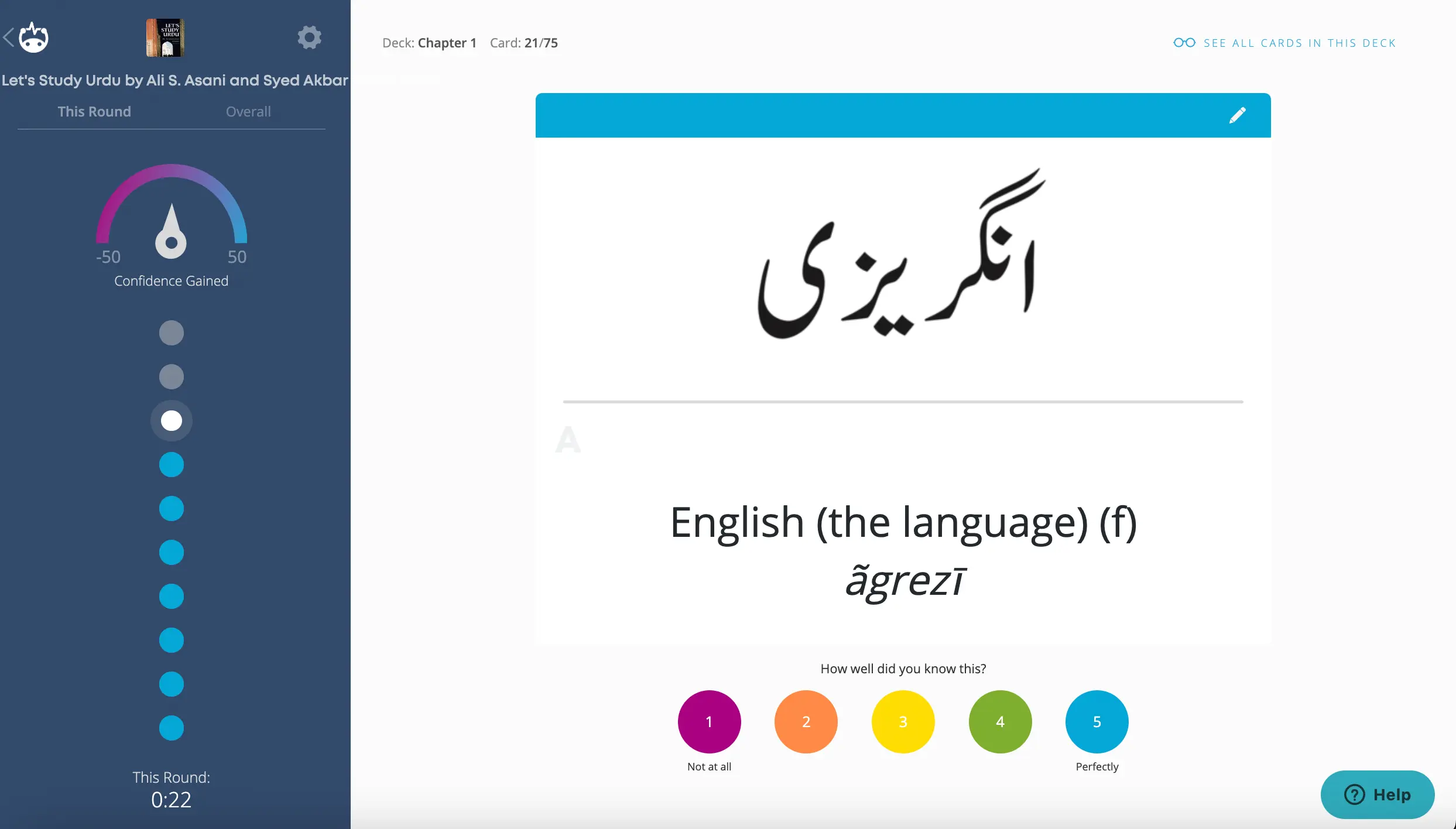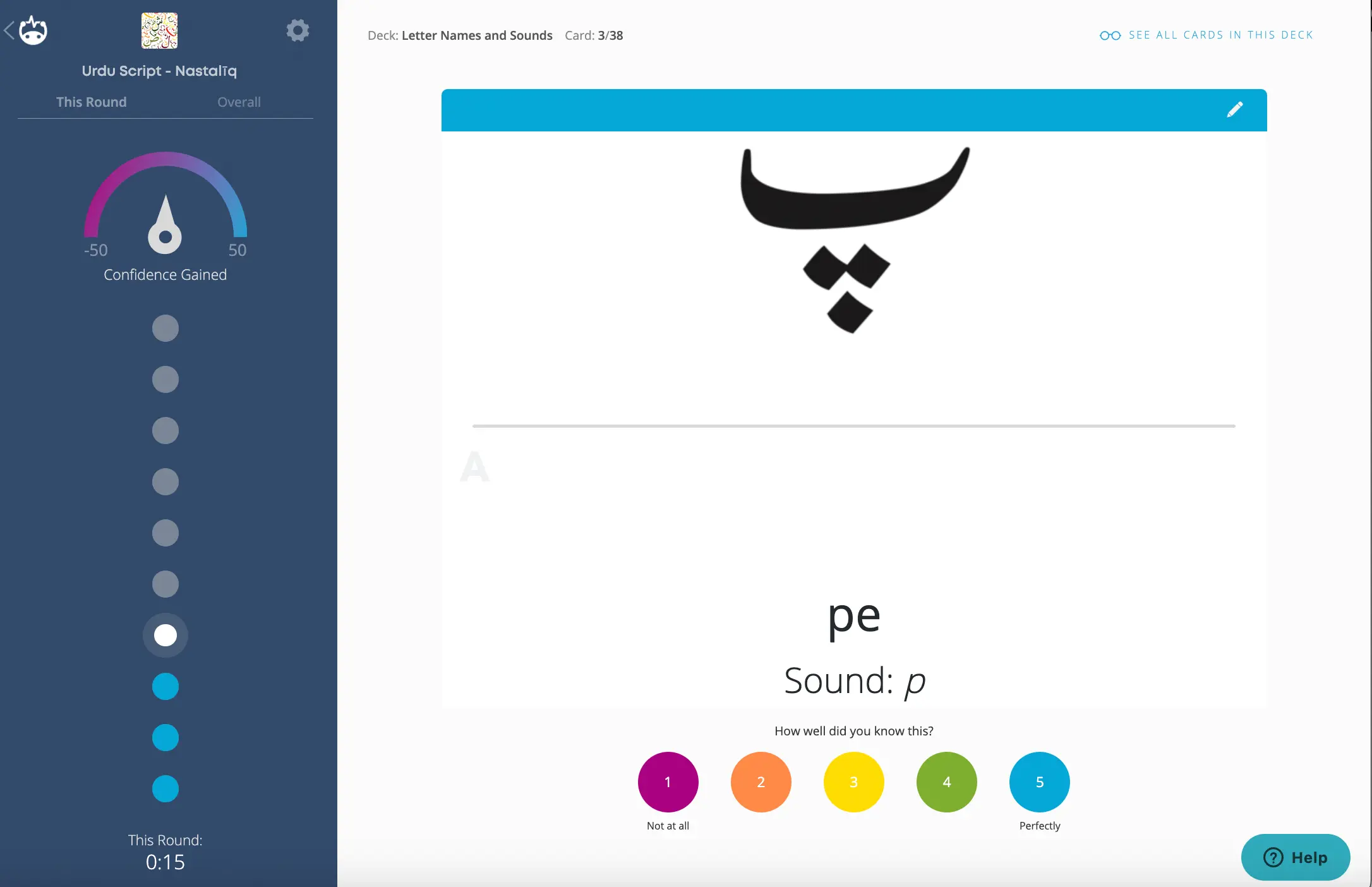Introducing a Free English-Urdu Dictionary for Learners
I plan to update the dictionary over time, so stay tuned for future versions. You can check out the Changelog below to see what's been updated.
Please Note:
- Modification Prohibited: The content of this dictionary may not be modified in any way without prior written permission.
- Attribution Required: When presenting or distributing this dictionary, please provide appropriate credit.
Why This Dictionary Stands Out
There are very few English-Urdu dictionaries that cater specifically to the needs of Urdu learners. This dictionary tries to help fill that gap by offering a user-friendly format that makes learning more efficient. Here's what sets it apart:
Organized by Part of Speech: Each word is grouped into its respective category, such as nouns, adjectives, verbs, and adverbs. This allows learners to focus on a specific type of word as they expand their vocabulary. A future, alternative version may list all entires together.
Searchable PDF: You can easily search for words using the built-in search feature of your PDF viewer, making it quick and simple to find exactly what you're looking for.
Easy Navigation: By enabling the "Table of Contents" or "Bookmark" view in your PDF viewer, you can effortlessly jump between sections of the dictionary. You can also navigate the longer sections by beginning letter.
Useful Vocabulary: The vocabulary of Urdu, like English, is vast. My aim in this dictionary is to include the most useful words in modern Urdu, including the words Urdu students are most likely to come across when learning the language.
Special Thanks
A Work in Progress
While I'm proud of this resource, it's still a work in progress. You may find errors or areas that can be improved. If you notice any mistakes or have suggestions for enhancing the dictionary, I'd love to hear from you. Your feedback is incredibly valuable and will help make future versions even better.
I hope this dictionary becomes a helpful tool on your journey to mastering Urdu!
Changelog
3.7 (Jun 08, 2025):
- A section for Common Names has been added.
- A number of formatting errors were fixed.
- Some spelling mistakes were corrected.
3.6 (May 19, 2025):
- An overview of the fonts used in this dictionary has been added.
- This release focused on the sections from Adjectives to the end.
- A number of formatting errors were fixed.
- Some spelling mistakes were corrected.
3.5 (May 12, 2025):
- This release focuses on the sections from the beginning through Verbs.
- A number of formatting errors were fixed.
- Some spelling mistakes were corrected.
3.4 (Apr 30, 2025):
- The number of entries in Nouns increased from 2,883 to 2,923.
- The number of entries in Verbs increased from 1,496 to 1,515.
- The number of entries in Adjectives increased from 1,140 to 1,166.
- The number of entries in Adverbs increased from 611 to 631.
- The number of entries in Postpositions increased from 93 to 95.
- A number of additions and corrections were made to other sections.
3.3 (Apr 18, 2025):
- The number of entries in Nouns increased from 2,737 to 2,883.
- The number of entries in Verbs increased from 1,442 to 1,496.
- The number of entries in Adjectives increased from 1,076 to 1,140.
- The number of entries in Adverbs increased from 590 to 611.
- The number of entries in Postpositions increased from 76 to 93.
- A number of additions and corrections were made to other sections.
3.2 (Mar 30, 2025):
- The number of entries in Nouns increased from 2,606 to 2,737.
- The number of entries in Verbs increased from 1,294 to 1,442.
- The number of entries in Adjectives increased from 1,033 to 1,076.
- The number of entries in Adverbs increased from 555 to 590.
- A number of additions and corrections were made to other sections.
3.1 (Mar 13, 2025):
- The the title of Question Words was changed to Question Words and Phrases to incorporate some multi-word interrogative phrases.
- The number of entries in Nouns increased from 2,540 to 2,606.
- The number of entries in Verbs increased from 1,160 to 1,294.
- The number of entries in Adjectives increased from 954 to 1,033.
- The number of entries in Adverbs increased from 468 to 555.
- A number of additions and corrections were made to other sections.
3.0 (Feb 20, 2025):
- The number of entries in Nouns increased from 2,102 to 2,540 with a focus on N to Z.
- The number of entries in Parts of the Body increased from 43 to 52.
- A number of minor additions and corrections were made to other sections.
2.9 (Jan 22, 2025):
- The number of entries in Nouns increased from 2,020 to 2,102 with a focus on L to M.
- Page breaks were added to separate each section.
- A number of minor additions were made to other sections.
2.8 (Jan 03, 2025):
- The number of entries in Nouns increased from 1,640 to 2,020, with a focus on A to K.
- A number of minor additions were made to other sections.
2.7 (Dec 28, 2024):
- The number of entries in Adverbs increased from 138 to 464.
- The number of entries in Nouns increased from 1,586 to 1,640.
2.6 (Dec 17, 2024):
- The number of entries in Adjectives increased from 826 to 952, with a focus on S to Z.
- A number of minor additions were made to other sections.
2.5 (Dec 12, 2024):
- The number of entries in Adjectives increased from 703 to 826, with a focus on N to R.
- A number of minor additions were made to other sections.
2.4 (Nov 27, 2024):
- The number of entries in Adjectives increased from 552 to 703, with a focus on G to M.
- A number of minor additions were made to other sections.
2.3 (Nov 15, 2024):
- The number of entries in Adjectives increased from 304 to 552, with a focus on A to F.
- A number of small miscellaneous changes were made.
2.2 (Nov 06, 2024):
- The number of entries in Verbs increased from 908 to 1158, with a focus on M to Z.
- A number of small miscellaneous changes were made.
2.1 (Oct 21, 2024):
- Three new sections have been added: Family Relations / Months / Seasons.
- A top row was added to the top of each section to display column titles (e.g. Entry # / English, etc.)
- A copyright page has been included as the second page of the dictionary.
- The formatting of some entries was redone in the first four sections (Pronouns - Direct Case / Pronouns - Oblique Case / Question Words / Relative Complements) to better match the rest of the dictionary.
- The entries in Colors were highlighted with their respective colors.
- The number of entries in Nouns increased from 1,527 to 1,575.
- The number of entries in Verbs increased from 833 to 908.
- The number of entries in Adjectives increased from 302 to 304.
- A number of small miscellaneous changes were made.
2.0 (Oct 09, 2024):
- A Key has been added to the beginning of the dictionary to explain the abbreviations used.
- The plural form of nouns (when given for special cases) is now treated as the same entry as the singular form in Nouns.
- The entires in Colors, Days of the Week and Parts of the Body can now also be found in Adjectives and Nouns, respectively.
- The number of entries in Nouns increased from 1,503 to 1,527.
- The number of entries in Adjectives increased from 288 to 302.
- A number of formatting improvements were made, especially to make the Urdu script entries more vertically centered.
1.9 (Sep 26, 2024):
- The Nouns section now has just one English headword per entry to match the other sections.
- The number of entries in Nouns increased from 1,308 to 1,503.
- A number of small changes were made in the Nouns entries, including fixing some spelling and formatting errors.
1.8 (Sep 19, 2024):
- The Urdu script has been added to all remaining sections (Adjectives / Adverbs / Possessive Pronouns / Postpositions / Conjunctions / Phrases).
- Navigation by first letter has been added to Adjectives and Adverbs.
- Adjectives and Adverbs are now listed with just one English headword to match the Verbs section (this still needs to be done for Nouns).
- The number of entries in Adjectives increased from 165 to 288.
- The number of entries in Adverbs increased from 101 to 136.
- Several miscellaneous errors were fixed.
1.7 (Sep 17, 2024):
- All sections are now in table format.
- All sections now have the English headword first.
- The Urdu script has been added to all entries in Particles, Colors, Days of the Week, Parts of the Body, and Numbers (including all sub-sections).
1.6 (Sep 14, 2024):
- The number of entries in Verbs has increased from 571 to 833. The verbs from A to L are pretty thoroughly covered. Additions are required in M to Z.
- The entries in Nouns and Verbs can now be navigated by first letter.
1.5 (Sep 09, 2024):
- The number of entries in Verbs has increased from 375 to 571.
- The English column in Verbs now has just one English verb.
1.4 (Sep 07, 2024):
- Each item within the table of contents is now clickable and will take you straight to that section.
- An image of the Urdu script was added to the title page.
- Conjunct Verbs was merged with Verbs and the Urdu script for their entires was added.
- The number of entries in Verbs increased from 255 to 375.
1.3 (Sep 05, 2024):
- A table of contents was added that should be usable in all PDF readers which should make navigation much easier.
- Pronouns has been separated into Pronouns - Direct Case and Pronouns - Oblique Case.
- The order of the first several sections has been reworked (hopefully it's more logical now).
- Five additional sections have been brought into the "table" format to match the formatting of Nouns and the Urdu script has been added to those sections.
- The Urdu script columns have been formatted to be easier to read (many of the words in Nastaliq were getting cut off on the top).
- Several other miscellaneous changes were made, including error corrections and formatting issues.




Comments 2
Hi Christopher,
I recently finished reading through your Urdu dictionary, and I really appreciate the effort you’ve put into it! I’m excited to share it with my partner, who’s learning Urdu, and some friends as well. I had a couple of questions, though—did you study Hindi as part of your preparation for this project? I noticed a few words that seemed more common in Hindi than in Urdu. For instance, “desh” دیش for “country” is rarely used in Urdu, where “des” دیس is more typical. Here’s a link with the pronunciation guide in IPA.
https://en.wiktionary.org/wiki/دیس#Urdu
I also spotted some romanization choices that could be worth looking into, like the use of a regular “g” for غ instead of a bold “g,” which might make pronunciation clearer. This is a detail that sometimes trips up Hindi speakers, as they often blend گ and غ in practice.
Overall, it’s a fantastic resource, and I’m looking forward to sharing it with others!
Author
Hi Hadi,
Thanks very much for your kind words and for the feedback!
Yes, my studies have focused extensively on Hindi (and on Urdu as spoken in India). I just added دیس (des), so it’ll be in the next version.
As you mentioned I’ve tried to differentiate غ from گ by using a bold “g” but I’m sure I missed some. Do you happen to remember which words you saw were missing the bold font?
Thanks again and do let me know of other errors you come across if it’s not too much trouble—I appreciate it!